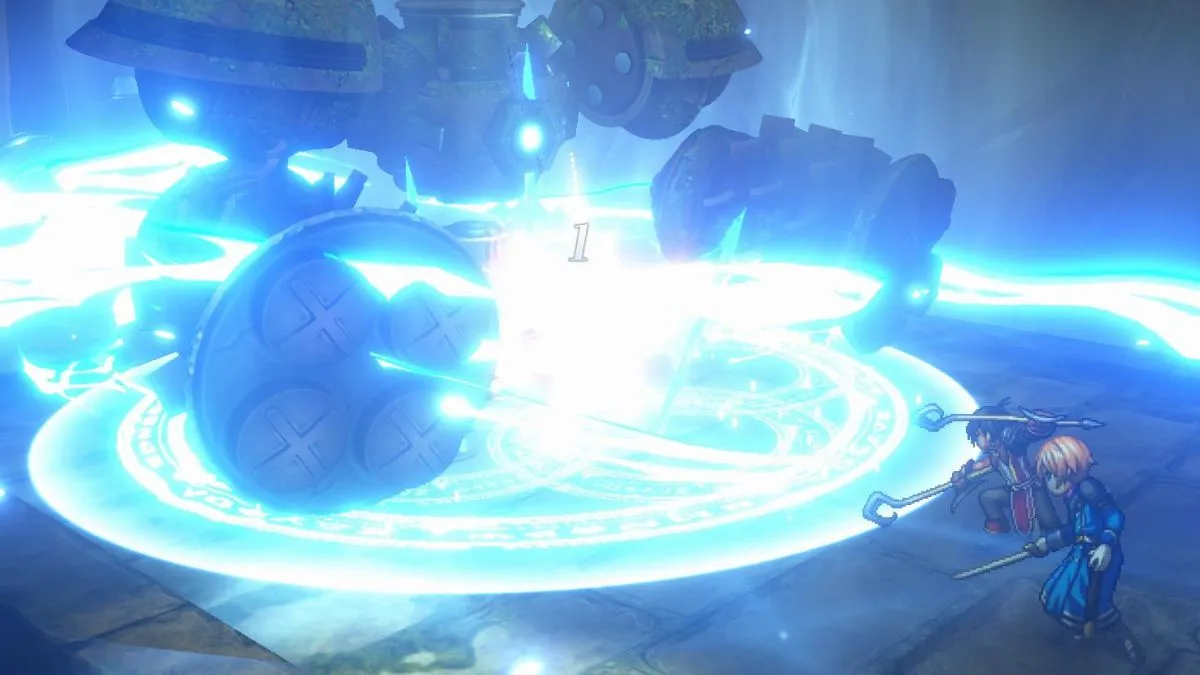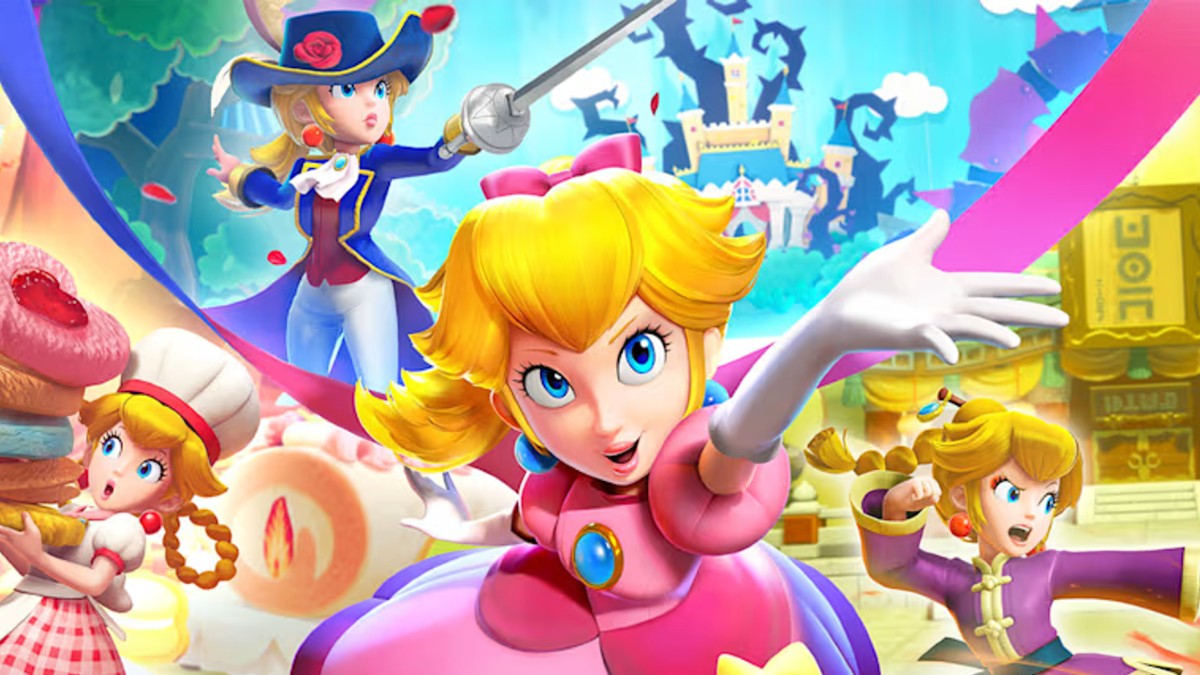It doesn’t take very long for Torchlight II to get its hooks in you. Between a beautifully animated opening cinematic, and a just-complex-enough character creation system, it’s not difficult to feel touched by the game’s easy charm right from the start. There’s just something about rolling a wrench-wielding, steampunk engineer with a gentleman’s mustache as fancy as his tiny French dog that endears you to the world of Torchlight II before so much as stepping foot in it.
As you begin to hack your way through Torchlight‘s wilds, quest-givers and story-pushers will prod at you with narrative like a small, pointy stick. The story they tell is more or less a rehash of the first, something about a blight of corruption threatening the world, and an ancient artifact in need of a solid thrashing. It’s not that the political happenings of the world aren’t well written, or that you can’t find yourself caring about what elemental guardian has just been tainted – you can – but the world around you is just so vibrant and alive that the call to explore it simply drowns out the pages of text trying to explain why you should.
The game’s visual style is just a joy to absorb, with a canvas of diverse locales, and an array of creatures so unique that you’ll never really know what to expect when delving into one of the game’s many dimly-lit caverns and ancient temples. Each chapter of the game is a new set of maps to conquer, with enough interesting content in each to make you want to take the side-roads that won’t lead toward your objectives just to see what’s waiting at their end. Of course, along the way, you’ll be faced with a veritable menagerie’s worth of bugs, raiders, warriors, lizards, steam-powered robots, zombies, wizards, beetles, and birds in dire need of dispatching, each with a sizable amount of randomly-generated loot to help keep you in the fight as things get progressively more difficult.
If any two types of enemies come at you the same way, it certainly doesn’t feel like it, and while few make you alter your strategy of click-click-click, their changes in color, animation, and attack types is generally enough to keep you from caring. Making the combat personal is a two-part job: Equipping the right gear adjusts the effectiveness of your attacks while the skills you choose to learn each level determine exactly how those attacks land on target. The relation between the two feels perfectly in balance, without either side of the equation ever making the other seem unnecessary or under-powered. In a sense, it’s this relationship that helps push the loose, more traditional feel of Torchlight II‘s combat away from its modern competitors.
Torchlight II‘s stubborn adherence to the old ways of hack-n-slash outwardly rejects the majority of changes games like Diablo III tried to introduce to the genre, especially when it comes to stats, skills, and leveling. Unlike many of its contemporaries, Torchlight II offers virtually no concessions for the commitment phobic, making skill point and stat assignments a permanent decision, save only the three most recently earned. The decision to lock you into skill trees you began cultivating from the beginning of the game – a focus on two-handed weapons versus a ranged cannon, for instance – works terrifically well when you’re happy with your current gear and strategy, but newer players more used to fine-tweaking builds during the late game may feel frustrated having firmed their character before gaining a grasp of the experience that only hours of playtime grants.
This faithfulness to traditional RPG progression is a design decision, not a flaw, and while it may be easy to feel frustrated forgoing a powerful item later in the campaign that you haven’t specced for at earlier levels, Torchlight 2 has found many interesting ways to reward you in its stead. Core character stats behave as usual – building a tank-type with strength and vitality is still a good bet – but you’re often incentivized to expand into stats more traditionally appropriate to other classes by way of items. Most gear doesn’t come with class restrictions, but rather an either/or prerequisite system that keeps the majority of armor and weapons technically viable regardless of which character you’re playing. For instance, claw weapons generally jive best with Berzerkers, but most give you the option of having either a high level requirement, or combination of Berserker-friendly stats that your Outlander may just happen to have. It’s not often that you get to take advantage of this flexibility, but it sure feels great when you don’t have to trash a rare magic chest piece just because you aren’t an Embermage.
With so many viable options – especially in wardrobe – managing your inventory becomes a sizable part of the experience. Fortunately, the trusty pet you’re assigned at the game’s start is always on hand to run what’s unwanted to the town merchant, leaving you to continue adventuring without the need for long slogs back and forth to town each time your backpack feels heavy. You’ll still want to head there every so often, though, as each hub’s array of specialty merchants is a fantastic mix of fun and practicality. With the most boring, basic transactions out of the way thanks to your faithful companion, most vendors left offer a series of intriguing decisions to make. A pair of jewelers stands ready to either destroy your armor for the enchantment within, or destroy your enchantment to leave armor intact – never both. Another crafty salesmen sells mystery gear that you’ll need to commit to buying before discovering its true value. There’s even a touch of crafting – just the right amount to leave the joy of actually hunting for loot untouched. Unwanted, weaker items can be transformed into better versions at a loss, while a batch of four unique items (the rarest available) can be traded for one random new piece, but there’s no guarantee that it will be any better for your character than the four you just destroyed to get it.
This sort of playful randomness meshes perfectly with the construction of the world’s many large maps, often filled with small, special experiences that serve almost no purpose beyond being something new or different. Perhaps you’ll find a pitch-black cave with torches that spring to life as you advance, or a spontaneous portal that transports you to a mine where you must protect a crystal from avaricious goblins. Examined mechanically, these instances offer no significant change to the gameplay beyond adding to Torchlight II‘s special brand of wonder that permeates nearly every aspect of the experience.
In town or out, it’s hard to ignore the sheer effort of Torchlight II, and while it never quite revolutionizes the way we interact with this type of game, it does what it chooses to do extraordinarily well. Though there may be little new of significance behind it’s charming methodology, it’s succeeded at evolving the formula in way that solidifies the Torchlight series as a viable approach to a genre that Diablo had single-handedly defined for a decade prior. And with the inclusion of cooperative multiplayer (yes, LAN, too) plus the ludicrously low price of just $20, anyone with even the slightest interest in hack-n-slash RPGs should make the time to explore its realms for themselves.
Bottom Line: Torchlight II is a joy to experience, with vibrant landscapes packed full of interesting monsters, items, and lore just begging to be explored.
Recommendation: Even at three times its $20 price, Torchlight II would be a bargain. If you’re even remotely interested in the game or the genre, this is a no-regret purchase.
[rating=4.5]Game: Torchlight II
Genre: RPG
Developer: Runic Games
Publisher: Runic Games
Platform(s): PC



